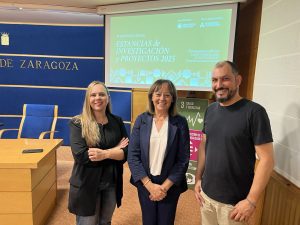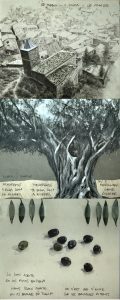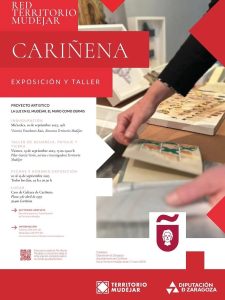



The Circular project from the rural school advances and has allowed us to share a special exchange between the schools of Ricla and Alpartir in which students have been able to learn about the heritage of another locality and show their own to other classmates. This twinning activity has been a peer-to-peer and cooperative learning experience in which students have interacted with other students to achieve educational objectives.
The first visit took place on 30 March. The third year primary pupils of the CEIP Maestro Monreal de Ricla welcomed the pupils of the CEIP Ramoìn y Cajal de Alpartir and told them the first ideas about the local mudeìjar and the cultural landscape.
They visited the ‘Aula mudéjar’, a museum space dedicated to exhibiting everything that has been worked on, adding period costumes and handicrafts.
The Alpartir schoolchildren then strolled through the streets of Ricla – full of twists and turns, alleyways and lanes – to reach the church of the Assumption with its slender Mudejar tower.
There, the pupils learned about the most important moments of the church (which was built in three stages) from Hilario, the parish priest. They also climbed to the top of the tower, from where they could see the town planning of Ricla, which we also talked about later.
There was time to go up to the castle of Muslim origin, although it is very much renovated, the result of an interesting existence. Today it has the appearance of a manor house and shows its great past importance as a defensive position.
The children from Ricla returned the visit to their classmates from Alpartir on 6 April. The Alpartir school team was in charge of welcoming the guests at a reception attended by the mayoress of Alpartir, Marta Gimeno, and the director of Territorio Mudéjar, Victoria Trasobares.
They then began the tour with a first stop at a point in the town from which La Almunia de Doña Godina, another of the towns that form part of the Mudejar Territory network, can be seen. Allí hicieron una presentación sobre los mudéjares, su forma de vida y el legado que todavía hoy conservamos. Además, aprendieron el origen del nombre de La Almunia de Doña Godina (Al-munia significa «huerto» y su apellido lo tomó de Doña Godina, una rica propietaria de Cabañas que en el siglo XII). La segunda parada dio a los participantes una perspectiva de Alpartir y de su entorno urbano que les permitió aprender sobre el caserío y la distribución de sus calles. Y el recorrido llegó hasta la calle de los obradores, donde conocieron los restos de un antiguo alfar.
The excursion was accompanied by a musical atmosphere and served to learn about the orientation of the village and the reason why it is on an “m” shaped slope, the importance of agriculture was also discussed and, of course, they went to the church, where they recognised elements such as the alabaster, the colopial arch and other decorative motifs.
The schoolchildren took part in various workshops. Among them, a crossword puzzle with words related to heritage or another in which they had to help Maribel, a historical character who ‘lands’ in the year 2022 somewhat disoriented and who must be helped so that she can get the building materials she needs. They also learnt to relate the Mudejar towers of our villages with their names and were introduced to the art of construction: sticks and plasticine were the raw materials with which they had to put themselves to the test to build towers of between two and five storeys high.
They also learned traditional crafts and became tanners for a day to learn how to make their own purses.
Circular from the Rural School allows learning by doing with an active, globalising, playful and participative methodology that manages to motivate students and helps them to gain knowledge about heritage.
Circular from the Rural School is a cooperation project between rural development groups coordinated by the Adri Calatayud-Aranda group, together with CEDEMAR, Adefo Cinco Villas, Asomo Moncayo, ADRAE Comarca Ribera Alta del Ebro – Zaragoza, Fedivalca and ADRI Jiloca-Gallocanta, and financed by the Government of Aragón through the Leader programme, and the Diputación de Zaragoza through the Territorio Mudéjar association, as a private collaborating entity that manages the implementation and execution of the initiative.


